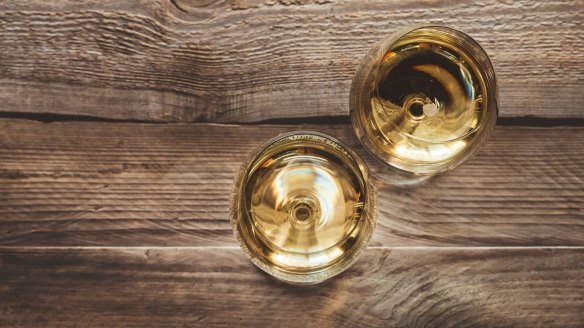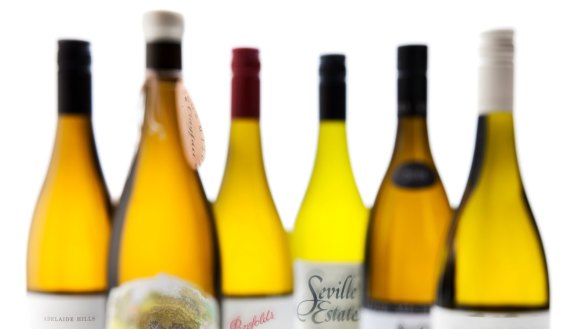Five things you might not know about chardonnay

Chardonnay is so popular, that it is nearly synonymous with white wine. We feel comfortable with it. It's easy to say, and it sounds like it ends with a smile (unless it's being pronounced by Kim in Kath and Kim). Because chardonnay is so ubiquitous, it can be easy to take for granted. Here are five things to know to make your chardonnay experience more meaningful.
1. Chardonnay's homeland is Burgundy
Chardonnay originated in the Burgundy region of France, and takes its name from a small town in the Maconnais, an area in southern Burgundy that makes relatively inexpensive, high-value chardonnays. Because it is now grown nearly everywhere wine is made, and because we label it by the grape variety rather than the place of origin, we tend to forget that appellations like Montrachet, Meursault, Pouilly-Fuisse and Chablis are synonymous with chardonnay.
2. Got bubbles? So does chardy
Chardonnay is one of the three main grapes used in champagne, along with (reds) pinot noir and pinot meunier. A blanc de blanc champagne is all chardonnay, and in my opinion the ultimate expression of the grape. Many New World sparkling wines use a significant amount of chardonnay as well.
3. It's the most popular white wine in America – by far
Chardonnay goes well with buttered popcorn, but it shouldn't taste like it.
California had 93,148 acres of vineyards planted to chardonnay in 2018, according to the US Department of Agriculture. The next most common white wine grape was French colombard, far behind at 18,246 acres, followed by pinot gris and sauvignon blanc.
Winemakers love chardonnay because it is easy to grow. And since its flavours are not as distinctive as other varieties such as riesling or sauvignon blanc, chardonnay has a "blank canvas" aspect that allows winemakers to flex their technique and leave their own imprint on the wine.
Winemaker David Ramey, who played a major role in developing the current style of California chardonnay, recently explained the grape's appeal on the podcast I'll Drink to That.

"Chardonnay is the most compelling and popular white wine in the world, because it is the red wine of whites," Ramey said. "It's so complex, so interesting. And it's the red wine of whites for two reasons: barrel fermentation and malolactic."
Which brings us to our next point.
4. Chardonnay should not taste like a tree. Or a bucket of buttered popcorn.
Fermenting the wine in barrels gives added tannin and structure, as well as some flavours of toast and spice, such as clove, vanilla or nutmeg. New barrels impart more of these flavours to the wine, while aging in older barrels gives texture. A generation of wine drinkers was introduced to chardonnay fermented and aged completely in new barrels, and we came to identify those flavours with the wine rather than the barrel. Today, winemakers tend to ferment only a portion of the wine in new oak, reusing older barrels for the rest. That results in a more balanced wine and saves money on expensive barrels.
The malolactic Ramey mentioned is a secondary fermentation that transforms tart malic acid into softer lactic acid. (Think green apples to cream.) All red wines have this fermentation, but chardonnay is the only white wine that routinely has it. "Malo", as it is often called, softens tannin and decreases bitterness that can come from the grape skins. It is attributed as the cause of buttery flavours in chardonnay, though there are other chemical factors involved in that phenomenon. Toasty flavours come from the char on the new oak barrels, but the butter on that toast comes from malolactic fermentation. Chardonnay goes well with buttered popcorn, but it shouldn't taste like it.
New World charddonay makers have toned down the oak, even to the point of making "naked," or unoaked chardonnay. Many Chablis producers traditionally do not use new oak, preferring to let the region's chalky soils express themselves through the wine.
Ramey is skeptical of the move toward unoaked chardonnay. "Can you use too much new oak? Absolutely," he said. "But the answer to using too much new oak isn't fermenting it in a stainless steel tank. Then you take away too much of the nuance. I personally think non-malo chardonnays are a shadow of what they could be, and just because you go through malo doesn't mean you end up with a fat, flabby wine."
Chardonnay expresses terroir
That blank canvas aspect means chardonnay is a good mirror of its climate and location – the mysterious quality wine lovers call terroir. In warmer climes, it can taste tropical (pineapple, mango), while cooler settings match the grape's refreshing acidity with flavours of orchard fruit like peaches and apricots. The winemaker's art is to capture that expression without obscuring it with too much oak or other techniques.
Some of my favourite chardonnay producers come from cooler climates that emphasise racy complexity. Look for wines from Tasmania (such as Tolpuddle), the high-altitude vineyards of Argentina's Mendoza, and Sonoma County, Oregon and Virginia in America.
The Washington Post